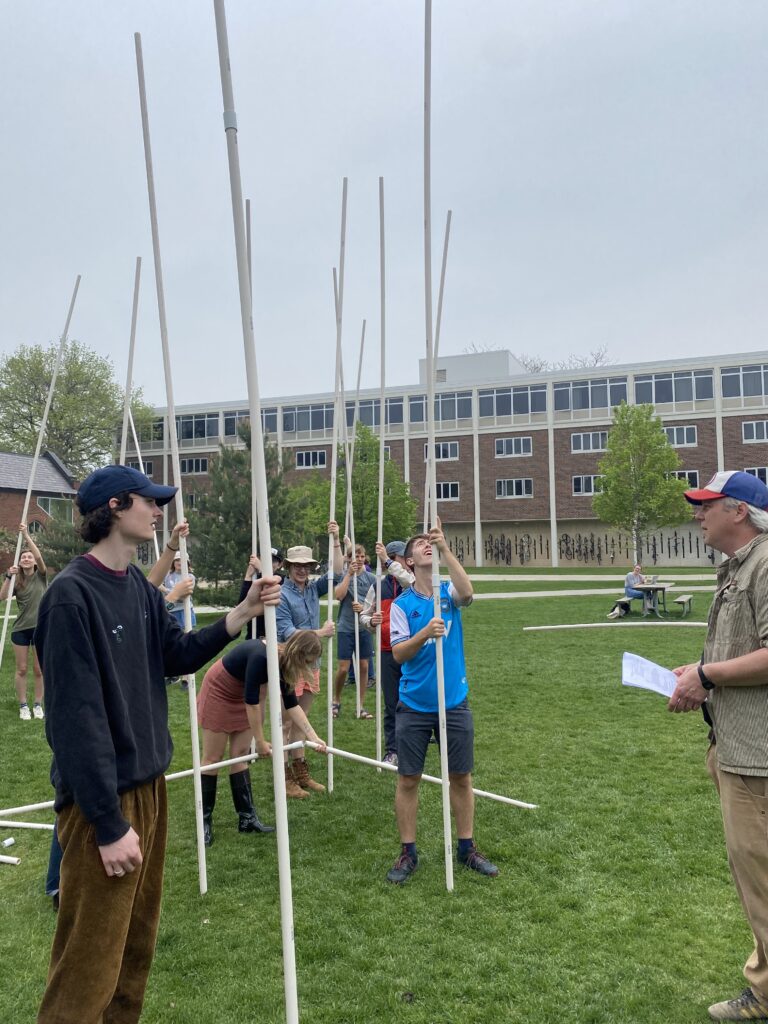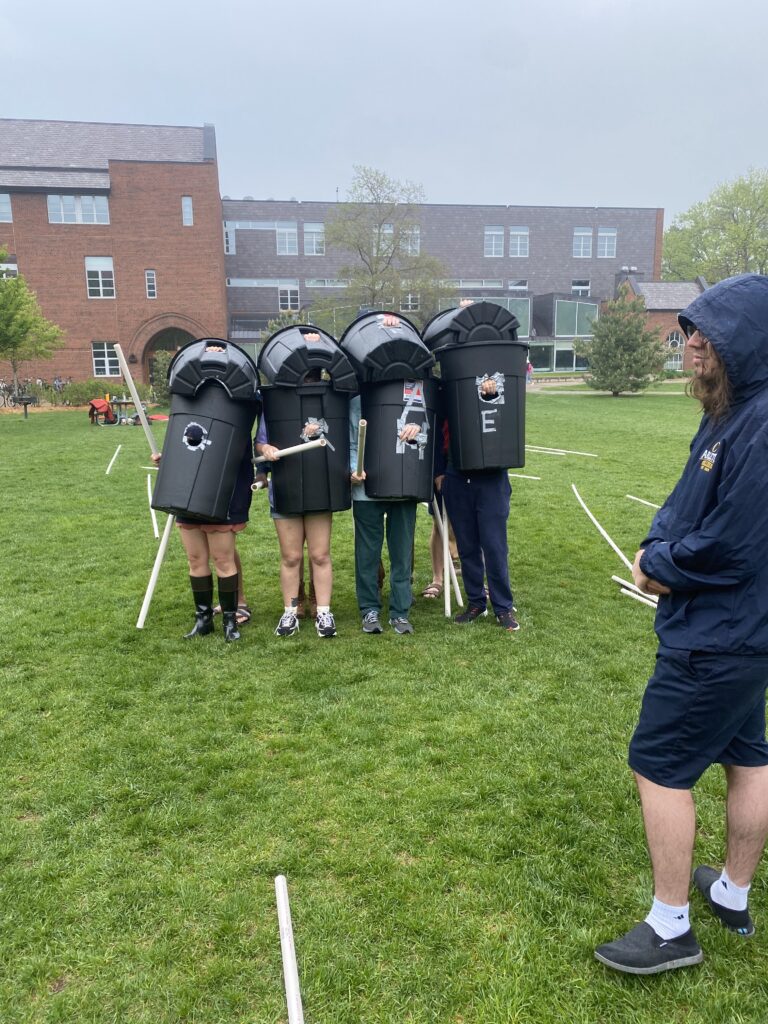Our research questions:
- How fast is the learning curve for each formation?
- What is the feeling of safety in each formation?
- Does each formation provide a different type of feeling safe, or can you directly compare safety levels (ie: Phalanx felt 5/10 safe while Hoplite felt 3/10 safe)
- Each of the three formations/technologies completely replaced the ones before it. Can we use proxy data to make sense of these transitions?
Formation 1: the greek hoplite
Equipment:
- 7 foot spear (PVC pipe)
- 55cm diameter shield (trash can lid)
Description of formation:
- For us it was 6 people across, 4 rows deep (In the ancient reality: 8 rows deep, as wide as possible. Units of 1000 I think… worth double checking.)
- shield on left arm, spear held in right hand (no left handed exceptions!)
- shields overlap to protect the right arm/shoulder of the soldier next to you
- person on the end is more vulnerable, they receive greater honor


Notes on the formation in action:
- you must spear over the top of your shield
- back people push front people forward
- if two hoplite lines combine, it becomes a pushing fest and lots of face stabbing
- hoplite vs a more disorganized army, hoplites can keep pushing and are strong
- rotating the group was easy
- there is no way for any individual soldier to run because they are being pushed from behind and the interlocking shields keep each one in place
- it is impossible to decide on strategy mid-fight: all strategy has to be decided on beforehand
Formation 2: the phalanx (mass transition to this tactic in 338 BC)
Equipment:
- 15 ft Sarissa spear (PVC pipe)
Description of formation:
- For us it was 5 people across, 5 rows deep (In the ancient reality: 16 rows deep, 16 people wide. 256 people per square, but in ancient militaries they counted this formation in units of 1000.)
- spear held in right hand (no left handed exceptions!)
- soldiers spaced 3 feet apart

Notes on the formation in action:
- long spears beat the hoplite because the hoplite can’t even reach into the phalanx
- rotating, lowering, and raising spears makes the formation take longer to master, but not much longer, than the hoplite
- harder not to hit other soldiers in your unit with your spear
- less pushing than the hoplite but equally hard for an individual to run away
- we tried to walk over a hill in formation and this was difficult because the long spears would stab into other soldiers in the unit. Uneven terrain is a weakness with this formation.
- Obstacles are also a weakness; we tried to walk around a picnic table and it divided the line of spears, which would have caused trouble if we had an oncoming army who could slip into the break.
- Once an enemy is inside of the formation, it falls apart because you can’t use the long spears to fight in close-quarters combat.
Formation 3: the roman maniple
Equipment:
- tall curved shield (half of a trash can lid)
- short (I believe 3 ft long but maybe check this :/ ) sword (PVC pipe)
Description of formation:
- For us it was 8 ish people across, 3 rows deep (ancient reality: 120 people across, 3 rows deep)
- 6 feet spacing between soldiers
- hold shield in your left hand and sword in your right hand

Notes on the formation in action:
- although you are farther away from others, you feel hugged by the shield
- the front row stabs their swords; when they get tired, they rotate to the back of the formation and a new row steps in. Helps with fatigue.
- feels like it is easier to run away if you get scared, but in the ancient reality, veterans soldiers made up a back row and killed all deserters
- it is possible to change strategy mid-battle, which none of the other options affords! There is way more mobility and ease of communication: once the formation has started, it’s fully possible to stop it whereas the other formations you are stuck in a pushing fight.
- the maniple vs. the phalanx: the maniple can break the rank of the phalanx by sending a few people in to focus on one spot in the line, and then pressing in once a dent has been made (we simulated this)
Personal safety poll (in class on friday):
How safe did you feel? F1=2 F2=3 F3=20
Which formation made you feel most confident about winning? F1=2 F2=13 F3=10

0 thoughts on “Data Report Week 8: Tactics”